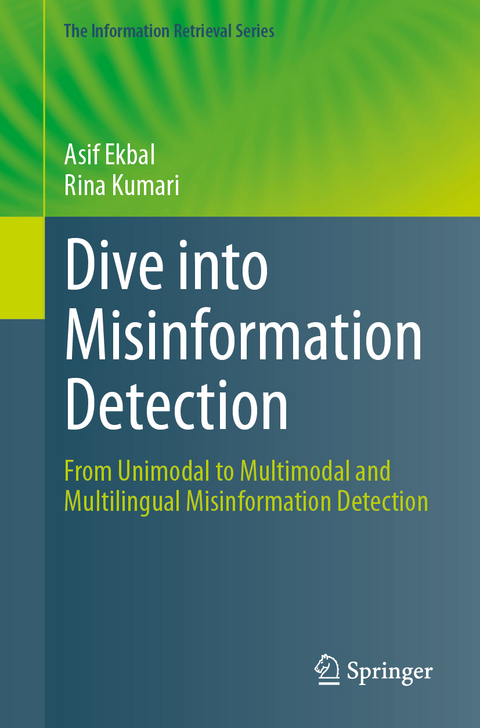
Dive into Misinformation Detection
Springer International Publishing (Verlag)
978-3-031-54833-8 (ISBN)
This book delivers a brief introduction to misinformation, and various novel approaches for solving misinformation detection problems. It considers all kinds of false information as fake news or misinformation and uses the terms fake news and misinformation interchangeably, in text, images, audio and video. The primary purpose is to provide a foundation for the problems of misinformation or false content detection including various challenges and approaches to solve them.
The book starts with an overall description of misinformation. It briefly introduces the history, various issues or challenges, reasons for creating and spreading misinformation, and its impact on individuals and society. The second chapter discusses prior works on misinformation detection and explores various datasets, recent advancements, and state-of-the-art mechanisms. Chapter three demonstrates that the presence of surprising content in a story draws instant attention and appeals to strong emotional stimuli, and subsequently explores the application of novelty and emotion in the misinformation detection domain. Next, chapter four first introduces multitasking and discusses its advantages, before developing a framework for joint learning of interrelated tasks such as emotion recognition, novelty detection, and misinformation detection. The fifth chapter explores various datasets and mechanisms leveraging multimodal information, and eventually explains the fusion mechanisms of text and image modalities to obtain an efficient multimodal feature that ultimately helps to classify multimedia fake news. Chapter six discusses how novelty and emotion can be helpful in multimodal misinformation detection. It shows that detecting misleading information is difficult without earlier knowledge about that particular news and explores the possible solutions to tackle this problem. Eventually, chapter seven introduces the concept of multilingualism and implements an effective neural model to detectfabricated multilingual information, which overcomes the research and development gap in misinformation detection for regional languages. The final chapter eight briefly summarizes the presented results.
This book is mainly written for researchers and graduate students specializing in fake news search and detection, as well as for industry professionals who need to explore various dimensions of misinformation detection regardless of their past knowledge and experience.
Asif Ekbal is an Associate Professor in the Department of Computer Science and Engineering, IIT Patna and an Associate Dean, Resources at IIT Patna. He has been pursuing research in the broad areas of Artificial Intelligence, Natural Language Processing (NLP), and Machine Learning (ML) for the last 20 years.
Rina Kumari is an Assistant Professor in the School of Computer Engineering, KIIT Deemed to be University, Bhubaneswar, Odisha, India. Her main areas of research are Natural Language Processing, Deep Learning, and Fake News Detection.
1. Introduction.- 2. Recent Advancements in Misinformation Detection.- 3. Novelty and Emotion in Misinformation Detection.- 4. Multitasking for Misinformation Detection.- 5. Multimodality in Misinformation Detection.- 6. Novelty and Emotion in Multimodal Misinformation Detection.- 7. Multilinguality in Misinformation Detection.- 8. Book Summary.
| Erscheinungsdatum | 29.05.2024 |
|---|---|
| Reihe/Serie | The Information Retrieval Series |
| Zusatzinfo | XX, 172 p. 46 illus., 45 illus. in color. |
| Verlagsort | Cham |
| Sprache | englisch |
| Maße | 155 x 235 mm |
| Themenwelt | Mathematik / Informatik ► Informatik ► Datenbanken |
| Schlagworte | Deep learning • Fake News Detection • Misinformation Detection • Multimodal Feature Fusion • Natural Language Processing • Sentiment Prediction |
| ISBN-10 | 3-031-54833-7 / 3031548337 |
| ISBN-13 | 978-3-031-54833-8 / 9783031548338 |
| Zustand | Neuware |
| Haben Sie eine Frage zum Produkt? |
aus dem Bereich


